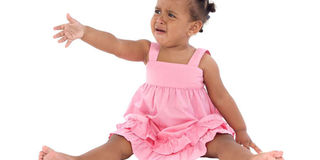What to know about hand, foot and mouth disease

Hand, foot and mouth disease is characterised by a terrible rash on the hands and feet.
Two weeks ago, I visited my cousin and found her little boy recovering from hand, foot and mouth disease (HFMD). His skin had recovered fairly well but the feet still carried tell-tale signs that it had been a rough one. The peeling of the skin had not cleared completely.
Though it did not come as a shock to my cousin, who had the benefit of having witnessed it in a friend’s child, she was amazed at how easily it spread. A few days before her son was indisposed, she had visited her neighbour at the hospital. Her baby was admitted with fever and a terrible rash on the hands, feet and the mouth. She held the baby for a few minutes during the visit and the bugs had a field day clinging on to her until they were safely transferred to her own child.
Four years ago, we had a major outbreak in Kenya. To most parents, it was a new illness. The outbreak spread pretty quickly and babies everywhere were spotting strange rashes on their hands and feet. My nephew who was a year old then did not escape the scourge.
Being a doctor did not help as we wondered what the strange lesions were. However, a quick consultation with a paediatrician colleague allayed our fears. All I kept asking is why the horrible name. The only foot and mouth disease I knew of was reserved for animals, not humans!
My nephew survived it but spread it to three other babies in the neighbourhood. It was a week of sleepless nights and tiring days. The sores were all over his mouth and he wouldn’t eat. He survived on breastfeeding alone. We looked forward to when he would sleep, just so he would stop scratching himself all over. And then there was the dreaded fever. He would get so hot, his sister joked that if an egg were to be spread on him, it would cook.
VICIOUS OUTBREAK
Four years later, the outbreak is back and this time round, even more vicious. Kindergartens are sending babies home in an attempt to contain the spread. Children’s wards across the country are full of babies in need of fever control to avoid febrile convulsions and anxious mothers are wondering how to prevent siblings from taking each other down.
Despite the intimidating symptoms, the babies will survive it. They will have a crazy seven to 10 days but they will recover. Skin is very resilient. It will peel off and a brand new layer will form without residual blemishes. It shall pass.
In the meantime, it is important to know that the infection is purely of viral origin. Go slow on the demand for antibiotics. They are not needed. The infection is caused by a wide array of viruses that belong to a broad group called enteroviruses. This means that just because baby had a previous attack, he is not immune to a recurrence. It could be a result of a different type of virus the next time round.
Like most viral infections, they are passed on by contact. As the viruses survive and multiply in the gut, it is easy for the baby to shed them in stool and contact with it would infect the next person. Mouth to mouth contact is also a common source. This is why the kindergarten children pass it on like wildfire. After all, they share everything in their innocence, from water bottles to spoons, toys cups and even snacks. It also less commonly passed from one to the other via contaminated hands when coughing or sneezing. It is therefore easy to understand why it spreads so easily leading to outbreaks.
Once infected, it takes four to six days for the symptoms to set in. In majority of the patients, it will clear off in a week. It is important to control fever and pain, hence our trusty paracetamol comes in handy. It is also very important to ensure the baby eats and drinks lots of fluids to prevent dehydration. Antihistamines will help relieve the itchiness and allow the baby to sleep better.
POSSIBLE COMPLICATIONS
Complications are extremely rare and are more common in one to two-year-olds. Dehydration can result from poor feeding. The skin rashes may get a superimposed bacterial infection, calling for antibiotic creams. The viruses may cause complications in the brain by causing brain inflammation (encephalitis) or complications of the heart that may cause the extremely rare loss of life.
Though both boys and girls suffer from HFMD, but boys are more likely to exhibit symptoms, hence the inaccurate notion that it is a disease of boys. In addition, though adults are potential carriers, very rarely do they exhibit symptoms.
The outbreak is currently ongoing and no child is spared. It knows no race, no socio-economic background and no tribe. It is important for all of us to take it easy and stop piling blame on the kindergartens and playgroups or the neighbours’ son! Let us all play our role in maintaining strict hygiene and hand-washing, minimise sharing of potential risky items among the little ones and being vigilant to pick the symptoms early.
These little ones are much tougher than we think. They will survive this outbreak too!



